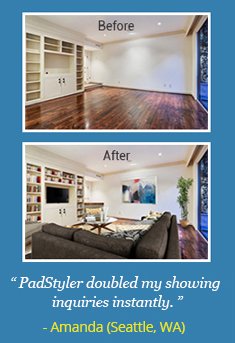3D architectural rendering is an essential tool for architects in modern times.
This is due to the advancement in technology that has allowed them to make designs with more ease. In the olden days, plans would have to be done by hand on blueprints which would lack efficiency and accuracy. Additionally, this would make them harder to rectify as well. 3D rendering has been a blessing for many industries, especially architects. It allows their measurements and proportions to be as accurate as possible. This enables them to visualize their work in advance before it is implemented.

However, 3D architect rendering is not without its challenges. Some of these challenges require a lot of practice, creative skill, technological prowess, and the need to implement a convincing design. In this guide, we will talk about everything you need to know about 3D architectural rendering.
Let’s dive in.
Table of Contents
- Understanding Types of 3D Rendering
- Understanding Potential Problems
- Rendering Techniques
- Post-Production
1. Understanding Types of 3D Rendering
Before diving into the details, it is vital to understand the types of 3D rendering. This is to avoid any confusion once we begin understanding how it works. Understanding this will also help you avoid any awkward interview moments where interviewers may ask you basics. By knowing the types of 3D rendering, you can ensure such a scene does not occur and become part of their 3D architectural rendering services.
The two main types of 3D rendering are offline rendering and real-time rendering. Let’s try and understand what each of these is.
Offline rendering refers to when frames are rendered in the form of a still image or sequences of images. It is generally used by architects who want to create photorealistic designs that catch the eye of audiences. You may have often seen such images as concept designs in front of construction sites. The point of these images is to show off as much potential of the plan. Additionally, it must also look realistic so that it looks convincing. The main priority of offline rendering is quality and does not focus on other aspects. Lighting and shading are some examples of offline rendering elements which we will talk about later.
Real-time rendering is another visualization technique that relies on moving images that give the impression of animation. These images are loaded rapidly, giving the effect of real-time movement. You can use it to provide a more detailed appearance of architectural designs. For example, a complex revolving design for a door may be shown more accurately through real-time rendering than offline rendering. Real-time rendering can also help impress clients, which makes it a helpful tool for architects.
2. Understanding Potential Problems
While 3D rendering does bring a lot of advantages and benefits to the table, it also brings potential challenges. It is essential you first understand these challenges before we dive into rendering techniques so you can have a firmer grasp on the topic.
One common mistake that architects tend to make is failing to understand the basic details of the design. This can be anything from floor plans to furniture plans during, for example, 3D apartment rendering. If there is a mistake made during this part, it can cause a lot of hiccups in the whole process. This can lead to disgruntled higher-ups or clients, which may require you to reevaluate the design. In this way, a lot of time and effort may end up being wasted.
Another problem arises with the choice of 3D rendering software. There are many software options out there, but it is impossible to choose all of them. You will have to narrow down the options based on various factors such as cost and features. It can be helpful to avail free trials so that you can get a feel for them and choose which one is ideal for you. It would help if you were on the lookout for standard plug-ins: forest packs, floor generators, and vray options, among others. Some of the cheaper software options may not have these advanced features, so you must evaluate all these factors. Keep in mind that you may be rendering various models, such as 3D building rendering.
Now that you have understood the potential problems, we will look at the nitty-gritty details of the actual work or techniques of 3D rendering.
3. Rendering Techniques
This is where we talk about the actual work that is involve in 3D architectural rendering. We will be looking at the basic techniques that go into 3D rendering and newer methods that are getting popular. Understanding these techniques separately will ensure you get a good grasp of them so you can see how they come together to create a 3D model.
Modeling is the first step of any 3D rendering process. The more effort you put into this part of the process, the higher your final rendering’s value. This means adding as much detail as you can to ensure a high level of photorealism. We recommend investing a high percentage of your time in this process.
Textures are another basic yet essential component of 3D rendering. You must pick the right textures for your model to ensure a high level of realism. Otherwise, even if you add a high amount of details to your model, the final render may fail to deliver because of unsuitable textures. It would help if you chose textures that suit the render to make sure the final product provides. You must consider perspective and angles to show off the perfect texture of the final render. Using high res images will also add value to your textures.
The setting is another vital aspect of your render. This involves choosing the perfect backdrop as well as light settings. Lighting is critical for the final presentation of your render, as the lighting and shadow effects make it look realistic and convincing. Having a neatly prepared file can help during this process because you will probably be making many changes. Learning how to choose the appropriate setting can’t generally be define by a set of rules as each model will be different and will require different ones. This is something only experimenting and experience will teach you. An experienced architect can realize what lighting and perspective to choose almost immediately. It is important to note here that you should be wary of reflections. If your model displays metallic objects, then the reflections should be according to the material. If your reflections look off, the final render will not look convincing.
Ray tracing is a more modern feature of 3D rendering software, such as Chaos Vray. Ray tracing refers to the process whereby the software will generate an image by tracing rays of light from a virtual camera and then simulating the effect based on how they interact with various objects. This can involve shadow formation as well. It is an effective technique that can be used to form photorealistic images quite quickly.
A combination of these techniques results in a final render that will give us the final image that we are used to seeing in concepts after post-production. We will discuss post-production in the next chapter.
4. Post Production
Once you have completed the rendering, it is time to add the final touches. This is post-production. The final raw render that you will generate may often have minor flaws that need to be rectified.
Post-production changes could be anything from colors and details that may need to be touched up. Sometimes, bigger changes will require, such as changing the perspective to improve the final product even more. Some of the elements you may change up may include grass, trees, background, and location. Brightness, shadows, and color contrasts are other features that you may tweak.
Wrapping up
3D Architectural Rendering is a handy tool for architects as it brings in a lot of ease and benefits for them. However, this is not without its problems, as you have seen some of them outlined in this guide. Various techniques are involved in 3D architectural rendering, and we have highlighted the important ones to get the complete picture that this process involves. We hope this guide has been helpful and informative.
We look forward to seeing you diving into 3D architectural rendering and thriving at it.




